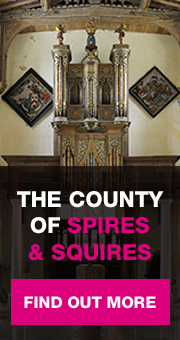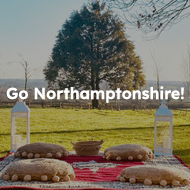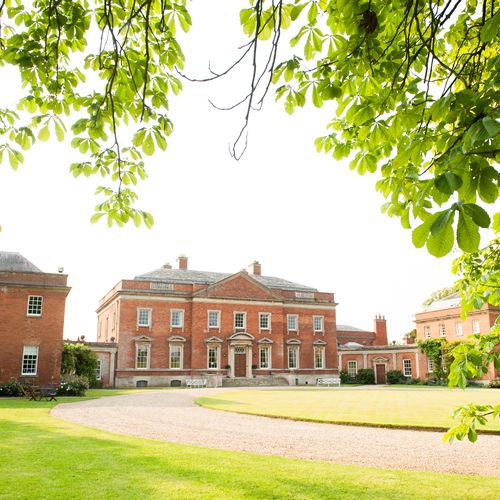8th May 2017
Kelmarsh Hall and the MacDonald Gill exhibition
I wonder if anyone else plays my game when visiting stately homes? I like to pretend that it’s mine, and that before moving in I mentally rearrange the furniture, and plan the redecoration to make it perfect for me.
Kelmarsh Hall tells the story of a 20th century lady lucky enough to do this for real, incidentally inventing the ‘English Country House style” at the same time. (Later she went on to part own Colefax and Fowler, the interior design company)
Kelmarsh is an ancient settlement dating back at least 2000 years, and the current mansion is a comparative new build by William Hanbury in the 1730s. The owners of Kelmarsh Hall have tended to earn their money through trade rather than aristocratic inheritance, and as fortunes waxed and waned the ownership of Kelmarsh transferred, ending up with the Lancaster family in the 20th century.
In the 1920’s Kelmarsh was let to aspiring politician Ronald Tree, and his American wife Nancy. And Nancy is the hero of this tale, for it was she who fell in love with Kelmarsh Hall, divorcing her husband and marrying Kelmarsh’s owner, Colonel Lancaster. Her son commented that she had really married Kelmarsh Hall itself.
Nancy was described as ‘spirited, glamorous, funny and self-willed’. She applied her impressive energies to the re-presentation of the Hall, clearing away the cluttered Victorian decor and creating her idea of what an English country house should be. Her eclectic style was relaxed, warm and colourful, favouring lots of rich fabrics. These were often left to fade in sunlight to develop their own character. She loved antiques mixed with modern pieces, and preferred oversized furniture to chintzy daintiness. Today her style is still respected and her presence felt in each of the rooms we visited. It is a style that is very appealing today, not the imposing and precious presentation of many a stately home, but rather rooms where one might imagine curling up with a book on an overstuffed sofa, or enjoy relaxing in a drawing room painted ‘the soul of blue’ with the candlelight ‘filling up the room like mist’ as it was described.
One of my favourite spaces is the Great Hall. Originally painted a gloomy green, Nancy painted it in delicates shades of terracotta setting off the beautiful plaster decorations to perfection. This scheme remains today, lovingly restored in 2016/17.
My other favourite room is the jaw dropping Chinese Room. Here the walls are lined with utterly beautiful 300 year old hand painted Chinese wallpaper which Nancy found at Kimberley Hall in Norfolk. I couldn’t stop looking at the detail.
Nancy Lancaster’s three signature style essentials included filling one's house with bowls of flowers, real candlelight, and lots of roaring open fires. Glorious! I shall take her inspirational look and apply it immediately!
One of the most fascinating items in the house is the Map Of The Pytchley Hunt. It is a fabulously detailed plan of the area and was created for the hunting mad owners of Kelmarsh Hall in 1929 by ‘Max’ MacDonald Gill.
Max was a multitalented architect and graphic artist who created maps, posters and other designs in the difficult years between 1913 and 1946. His images chart the massive changes in society, as well as the geography of the world over this troubled time.
Recently a collection of his artwork was unexpectedly discovered in a remote cottage in Sussex and this has formed the basis for this beautifully presented and occasionally poignant exhibition, showing at Kelmarsh Hall until 31.10.17.
The exhibition includes some of the ephemera of Max’s life, but best of all are the graphic posters and maps, so full of information and humour. One of my favorites was the 1929 map of The London Season, which included all the essential dates and social engagements for high society debutantes. Their world was swept away by the Wall Street Crash just four months after publication. There are wonderful maps of the British Empire and its connections. Max was engaged to design artworks to help strengthen colonial ties, with posters such as Tea Revives The World. This is a fabulous depiction of tea drinking nations. It boldly makes the claim that the people of the British Isles are the world’s greatest tea drinkers. I agree! This poster later was used as part of the war effort to keep spirits up.
The overshadowing of war is seen frequently - the unfinished map of parts of London which were destroyed during the Blitz, and the alphabet designed by Max specifically to be used on war gravestones, still in use today.
There is so much to enjoy in this exhibition, the particular sense of history, the detail of the maps, the humour, the bright graphic colour. I highly recommend that you catch it before the end of October. Kelmarsh Hall and its very English gardens make for a great visit, and the tea room is excellent. Some of the best scones I have enjoyed in a long time!
Scores on the beautiful doors for Kelmarsh?
Surprise factor: Awesomeness of crisp on the outside but moist in the middle scones: 6/5
And if Kelmarsh Hall really captures your imagination, then you are in luck! The Kelmarsh Trust is currently looking for volunteers to help in a variety of roles from welcoming visitors and helping them to explore the Hall, to assisting with school visits and family activities, and looking after the archive and collection.
For more information about volunteering and visiting Kelmarsh Hall, please see www.kelmarsh.com
Your login details have been used by another user or machine. Login details can only be used once at any one time so you have therefore automatically been logged out. Please contact your sites administrator if you believe this other user or machine has unauthorised access.








